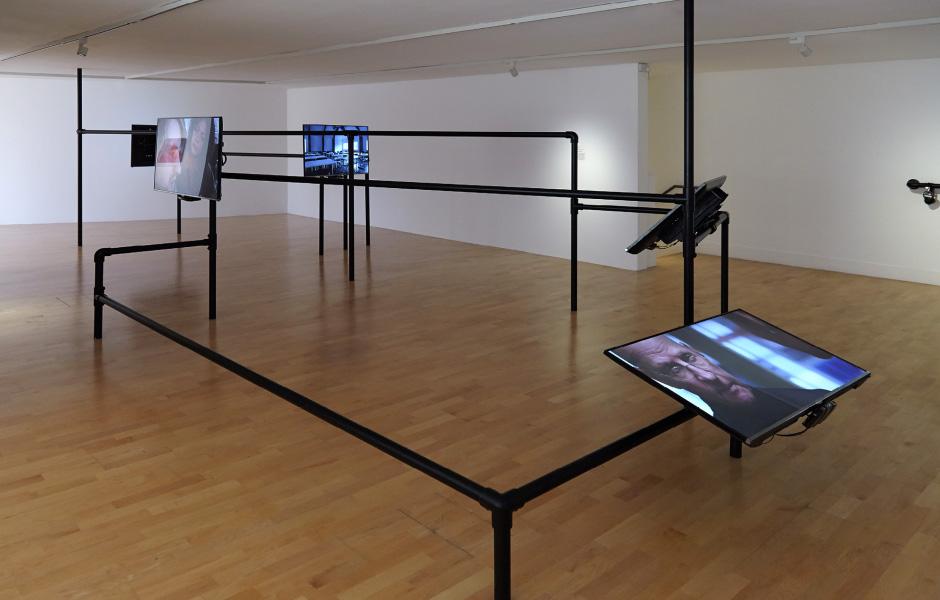The Common Sense is a dystopic drama set in the future, presented in the form of an immersive installation. Made up of fifteen short episodes, the drama follows the lives of people who are linked through a new connective technology called the “Patch”. This is inserted into the roof of the mouth and allows for a sensory connection as people can collectively sense and respond to one another’s emotions. In this world, connectivity is everything. Networks become language and information exchange occurs both rapidly and constantly. Brain activity is in hyperdrive and relationships are negotiated through the support of the “Patch”. When the network breaks down, chaos ensues as people attempt to navigate their lives without the support of constant communication. Yet when the “Patch” begins to function again, the story splits off into two parallel narratives both of which explore alternative economic, social and political developments.
Created by artist Melanie Gilligan, the videos provide a disturbing and unnerving insight into the darker possibilities of social connectivity. Dispersed across several narratives, one of which charts a business organisation attempting to construct and organise thought processes in line with their corporation and marketing strategy; the drama reveals the possibilities of information control and manipulation. The screens on which the episodes are displayed are dispersed throughout the exhibition space, fixed to a black scaffolding framework which carries connotations of the industrial. Given the dispersion of the screens, the viewer wears a headset which connects via Bluetooth to the screen the viewer navigates most closely to. As the viewer traverses the space between episodes, a crackling of static can be heard as the Bluetooth connection drops momentarily. This places the viewer in a state of awareness as they travel between screens, as similar to the characters during the point at which the “Patch” breaks down, the viewer’s connection is also intermitted.
It is unclear which screen charts the beginning of the narrative and where the story ends, as the stories glide between screens, looping continuously. The fragmented way in which the drama unfolds echoes the fragmentation experienced by the characters as the networks dissolve around them. As people struggle to engage with one another on a personal level, it becomes impossible not to translate the dystopic world back to reality. In a world where Facebook, Twitter, Snapchat and Instagram dominate, what does it mean for the future of relationships and social interaction? Within this work, Gilligan provides an insightful exploration into the possibilities of technology under capitalism and the ways in which it increasingly dominates our lives, minds and social structures.
